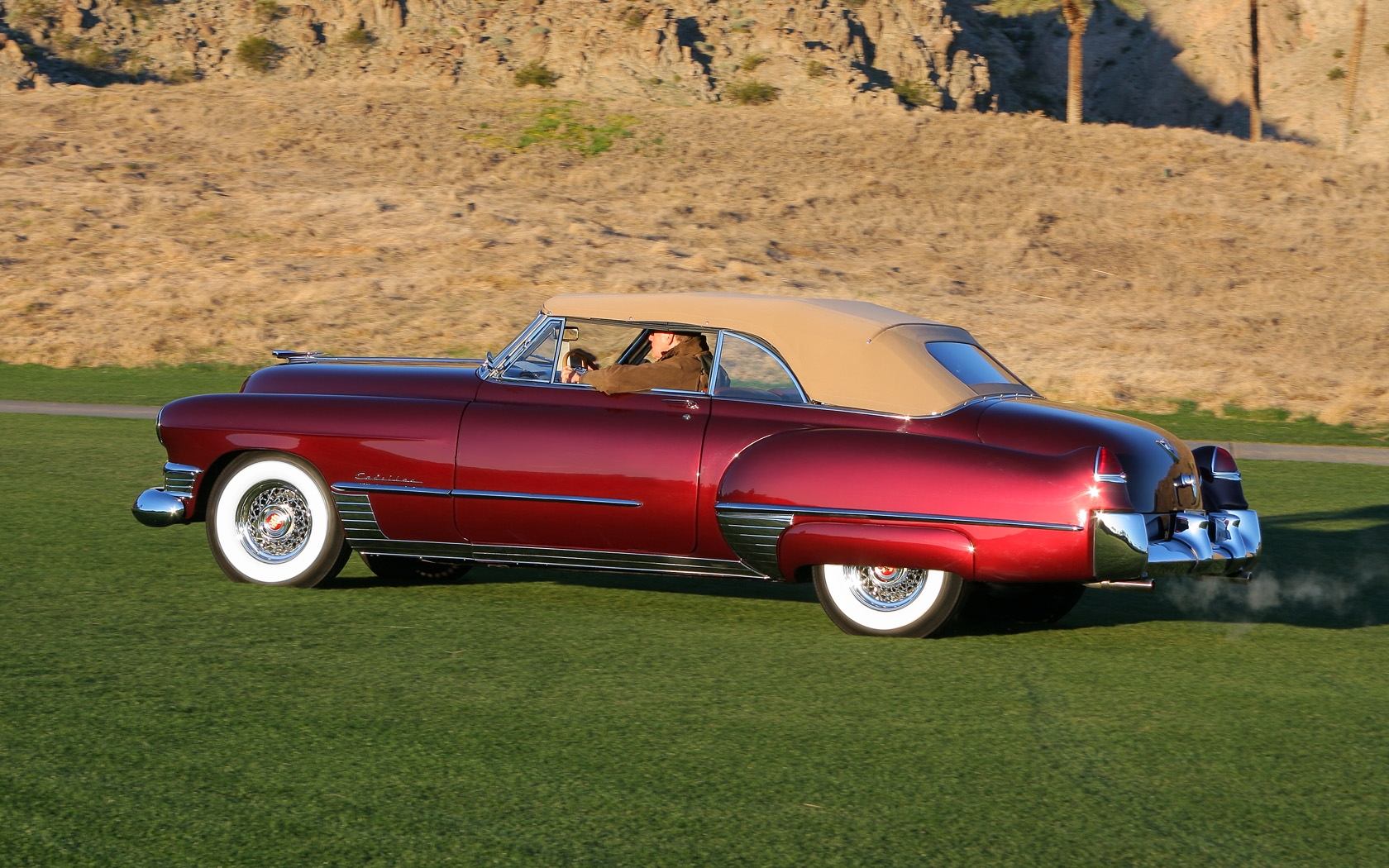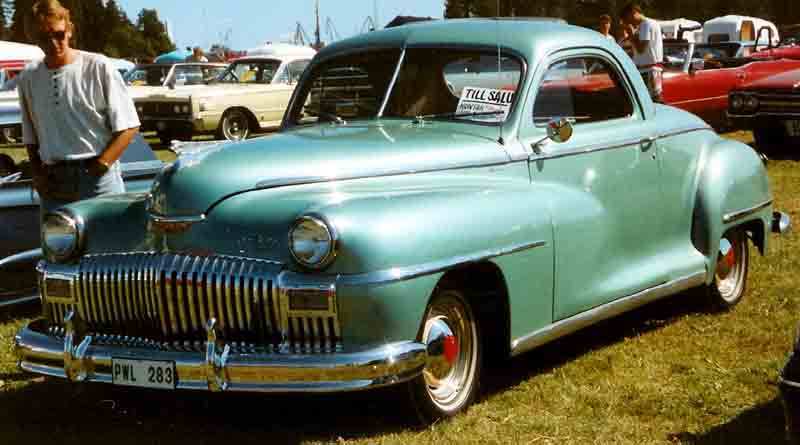Revving Back in Time: The Classic Cars of the 1940s

The 1940s were a pivotal decade in automotive history, marked by the shadows of World War II and the subsequent explosion of creativity in car design and engineering. The onset of the war dramatically halted civilian car production as manufacturers turned their factories towards military vehicles. From 1940 to 1945, the world witnessed a significant shift, where the focus was primarily on creating tools for warfare rather than the luxury of personal automobiles. This meant that many car enthusiasts had to wait patiently for the return of the civilian car. The war years were certainly a challenging time for automakers, yet they laid the groundwork for the post-war renaissance of the automotive industry.

As the dust of war settled and the world gradually returned to a state of normalcy, car production resumed in the United States around 1945. However, the initial models that rolled off the assembly lines were mostly replicas of pre-war designs. This was a necessary move—one that allowed manufacturers to re-establish their footing in the market before embarking on groundbreaking innovations. The decade also saw a number of small automakers rise to fill the void left by the larger car companies, showcasing both ingenuity and determination.

Despite these challenges, the end of the 1940s ushered in a host of stunning automobiles that blended style and function, showcasing the creativity of designers and the engineering prowess of their time. Classic cars from this decade are often lauded for their beauty, attention to detail, and distinct personality. Let’s take a closer look at a selection of remarkable vehicles that symbolize the spirit of the 1940s.

1. **1941 Pontiac Streamliner**: Imagine cruising in a car that perfectly encapsulated the essence of the early forties. The Pontiac Streamliner, with its fastback and wagon styling, is a prime example. Its chrome-laden exterior and low stance attracted a diverse crowd, from families to car modders. The production was halted in 1942, yet the return of the Streamliner in 1945 marked a significant moment in automotive history as it resumed the pre-war design momentum.

2. **L’Oeuf Electrique (1942)**: During the tumultuous war years, creativity thrived, and none exemplified this more than the French engineer Paul Arzens. He introduced the L’Oeuf Electrique, or Electric Egg, a charming aluminum and Plexiglas car aimed at addressing petrol shortages. Weighing just 350 kg (771 lbs), it could travel 100 km at an average speed of 70 km/h, embodying the innovative spirit of the time.

3. **Figoni & Falaschi Delahaye 135 MS ‘Narval’ (1946)**: This masterpiece from the famed coachbuilder Giuseppe Figoni is often regarded as one of the most beautiful cars of the forties. Only seven of these exquisite machines were crafted for the 1946 Salon de l’Automobile de Paris, making the Delahaye Narval a rare jewel in the world of classic automobiles.

4. **Alfa Romeo 6C 2500 Freccia d’Oro / Sport Coupe / Competizione (1946)**: As Alfa Romeo’s first post-war production, the Freccia d’Oro combined elegance with performance. Powered by a 2.5-liter, 6-cylinder engine, it could reach speeds of up to 155 km/h (96 mph). The distinctive design and the car’s appearance in the iconic film The Godfather only added to its legendary status.
5. **1946 Triumph 1800 Roadster**: The Triumph 1800 Roadster was a symbol of luxury and resilience, conceived while the war still raged on. Built with aluminum, it featured a 1.5-liter engine that allowed it to sprint from 0-100 km/h in 34.4 seconds. While it wasn’t considered particularly sporty, its charm lay in its design and solid performance.

6. **1946 Plymouth Deluxe**: The Plymouth Deluxe made its triumphant return to the assembly lines in October 1945. With elegant designs and significant updates from its predecessors, the P15S Deluxe and P15C Special Deluxe models captured the classic aesthetic that would only grow in appreciation over time.

7. **1947 Maserati A6 1500 Pininfarina**: Showcasing the elegance of Italian craftsmanship, the Maserati A6 1500 Gran Turismo was revealed at the 1947 Geneva Motorshow. Though it packed a modest 1,488 cc engine, its beautiful Pininfarina body and respectable top speed of over 150 km/h made it a desirable choice for car collectors.

8. **1947 Allard K1**: Born from the creative mind of Sir Sydney Allard, the Allard K1 was an affordable roadster that utilized spare parts left over from the war effort. With a Ford V8 engine often under the hood, it could reach impressive speeds, making it a unique offering during its time.

9. **1948 Jaguar XK120 Roadster**: The Jaguar XK120 Roadster emerged as one of the most successful sports cars of the late 1940s. Boasting a powerful 3.4 L XK inline-six engine and an aluminum body, it achieved maximum speeds exceeding 132 mph (212 km/h), captivating car enthusiasts and collectors alike.

10. **1948 Tucker Torpedo**: The Tucker Torpedo is a legendary vehicle that only 51 examples of were made, making it one of the rarest cars in existence today. Notable for its innovations like a third directional headlight and rear-mounted engine, it became a symbol of innovative design in the automotive industry.

11. **1949 Ferrari 166 MM Touring Barchetta**: The Ferrari 166 MM Touring Barchetta is a name that evokes passion among car aficionados. This stunning vehicle marked Enzo Ferrari’s first foray into sports cars post-World War II. With only 25 units produced, its lightweight design and robust performance made it a formidable contender on the racing circuit, famously competing in the Mille Miglia. This classic is not just an automobile but a symbol of racing heritage that continues to inspire luxury sports car manufacturers today.

12. **1948 Porsche 356**: The Porsche 356 is often seen as the starting point for the legendary Porsche brand. Designed by Ferdinand “Ferry” Porsche, this compact sports car featured a rear-engine layout and was available in both coupe and convertible forms. Its sleek lines and nimble handling garnered a dedicated fan base, setting the precedent for future Porsche models. The 356’s success laid the foundation for Porsche’s reputation for performance and engineering excellence.

13. **1949 Ford Club Coupe**: The 1949 Ford Club Coupe revolutionized the American auto market with its modern design and features. This was the first car to sport integrated fenders, a forward-mounted engine, and independent front suspension, signaling a new era in automotive design. Its streamlined look and innovative engineering made it a favorite among consumers and set the stage for the iconic models of the 1950s.

14. **1949 Cadillac Series 62 Convertible/Coupe**: The Cadillac Series 62 is often regarded as the quintessential car of the 1940s, embodying luxury and American automotive pride. With its striking chrome grille and elegant lines, it was a symbol of status and sophistication. The 1949 model introduced tailfins, a design feature that would dominate the decade and become synonymous with Cadillac’s identity. This vehicle appealed to those who desired both comfort and style on the road.
15. **1948 Chrysler Town and Country**: The Chrysler Town and Country holds a special place in the hearts of classic car enthusiasts. Dubbed the first hardtop, it was celebrated for its beautiful wood-paneled exterior and luxurious interior. It was equipped with cutting-edge features for its time, making it a favorite among families looking for a stylish yet practical vehicle. The Town and Country’s combination of elegance and utility makes it a true classic.

16. **1949 Buick Roadmaster**: The 1949 Buick Roadmaster is a testament to the opulence of the late 1940s. With its spacious interior and powerful engine, it was designed for comfort and performance. The Roadmaster featured distinctive styling with its sweeping lines and bold front grille, appealing to those who sought both luxury and innovation. This model paved the way for future Buick designs, solidifying the brand’s reputation in the luxury market.

17. **1948 DeSoto Deluxe**: The DeSoto Deluxe represented a new wave of American car design post-war. With its elegant styling and advanced technologies like the Gyrol Fluid Drive, it provided a smooth and comfortable ride. The 1948 model included a unique 9-passenger Suburban variant, which resonated with families looking for versatility and space. The DeSoto’s combination of practicality and style made it a popular choice among car buyers of the era.

18. **1949 Dodge Deluxe**: The 1949 Dodge Deluxe was a blend of classic design and modern innovation. Features such as the combination starter-ignition switch and GyroMatic transmission highlighted Dodge’s commitment to improving the driving experience. With its bold design and comfortable interior, the Deluxe appealed to a wide range of consumers looking for reliability and performance in their vehicles. This model marked a shift towards more innovative features in mainstream cars.

As we reflect on the iconic models from the 1940s, it’s clear that this decade was not just about overcoming the challenges posed by war but also about innovation and resilience. Each of these classic cars tells a story, woven into the fabric of automotive history. They represent a unique blend of artistry, engineering, and the spirit of an era that sought to redefine personal transportation. The legacy of the 1940s cars continues to inspire both collectors and enthusiasts today, reminding us of the beauty and craftsmanship that made them truly unforgettable.
Related posts:
The most beautiful cars of the 1940s
The Ultimate Guide
The Most Popular Cars by Decade Since 1940
Discover more from Auto Travel World
Subscribe to get the latest posts sent to your email.












